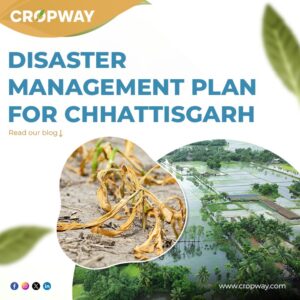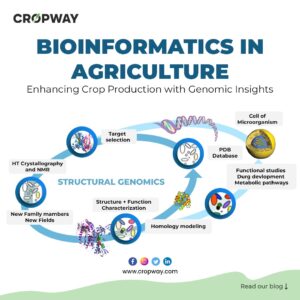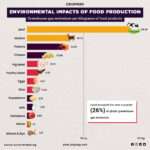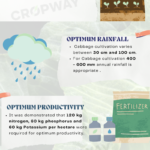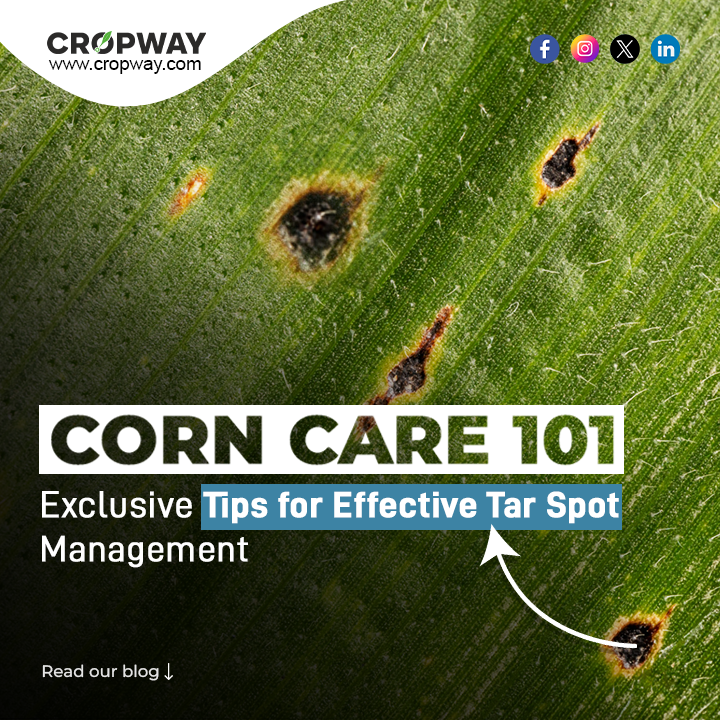
Tar spot, triggered by the fungus Phyllachora maydis, poses a significant threat to corn crops, particularly susceptible hybrids, under favorable disease conditions. Recognizing this issue is vital for effective management strategies.
Identification of Tar Spot:
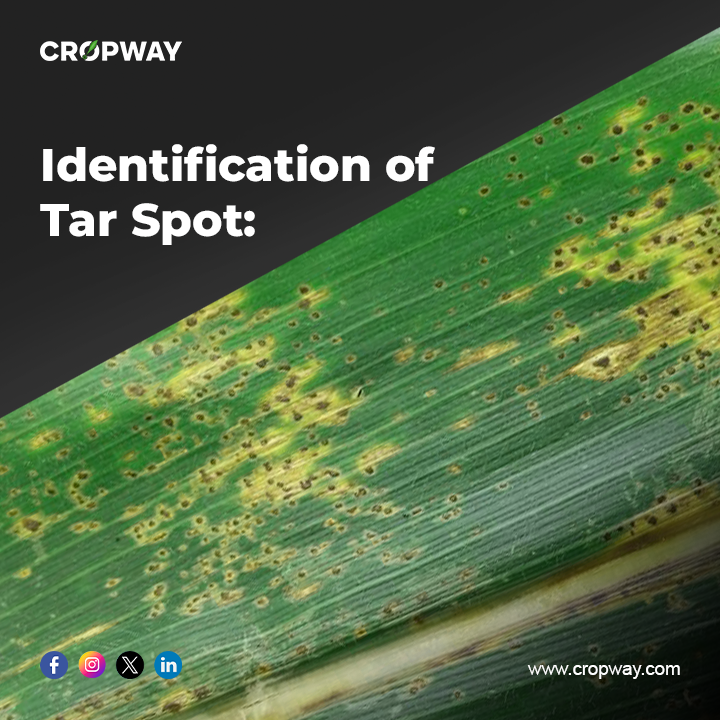
When conditions align, tar spot manifests as small, raised, black spots scattered across both upper and lower leaf surfaces. These spots, termed ascomatum, represent the fungal fruiting structures. Under microscopic scrutiny, numerous sausage-shaped asci filled with spores become visible. Advanced infections may even showcase ascomatum on husks and leaf sheaths.
Another characteristic, tan to brown lesions encircled by dark borders, known as “fisheye” lesions, can also develop. In regions like Latin America, where tar spot is prevalent, these lesions are associated with Monographella maydis. However, this particular fungus complex hasn’t been detected in the United States.
Differentiating Tar Spot from Rusts:
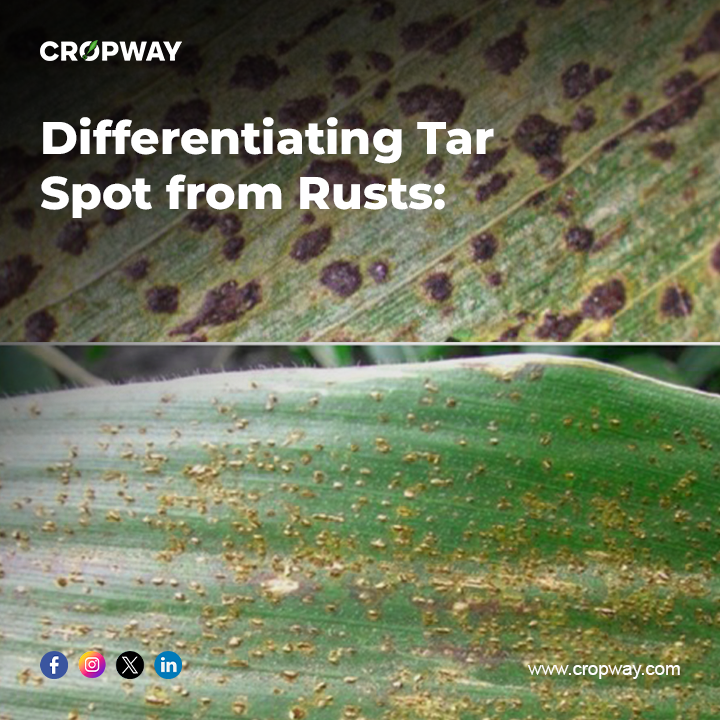
Toward the latter stages of the growing season, the appearance of common and southern rust pustules on corn leaves can sometimes bear a resemblance to the ascomata (fruiting bodies) of tar spot. This similarity often prompts confusion or misidentification, but there are critical distinctions in their characteristics that aid in differentiation.
One fundamental dissimilarity lies in the manner in which these fungal manifestations interact with the leaf’s surface. Rust fungi, whether common or southern rust, develop pustules that rupture through the epidermis of the leaf. These ruptures create visible spore-producing structures that protrude from the leaf surface. Consequently, when these rust pustules are touched or scraped, the spores can be dislodged or wiped away relatively easily due to their location on the outer layer of the leaf.
On the flip side, tar spot demonstrates unique characteristics. The ascomata of tar spot fungi adhere tightly to the leaf tissue without rupturing the epidermis. They manifest as raised, black, often slightly sunken lesions on the leaf surface, firmly attached and resistant to easy removal. Attempting to scrape or wipe away these tar spots results in minimal to no success in dislodging them from the leaf.
This crucial differentiation between rusts and tar spot is based on the interaction of the fungal structures with the leaf surface. While rusts rupture the leaf epidermis to create visible pustules, tar spot firmly adheres to the leaf tissue, showcasing its characteristic black ascomata that resist removal. Understanding this distinction becomes vital for accurate disease identification and subsequent management strategies in agricultural settings.
Lifecycle and Overwintering:
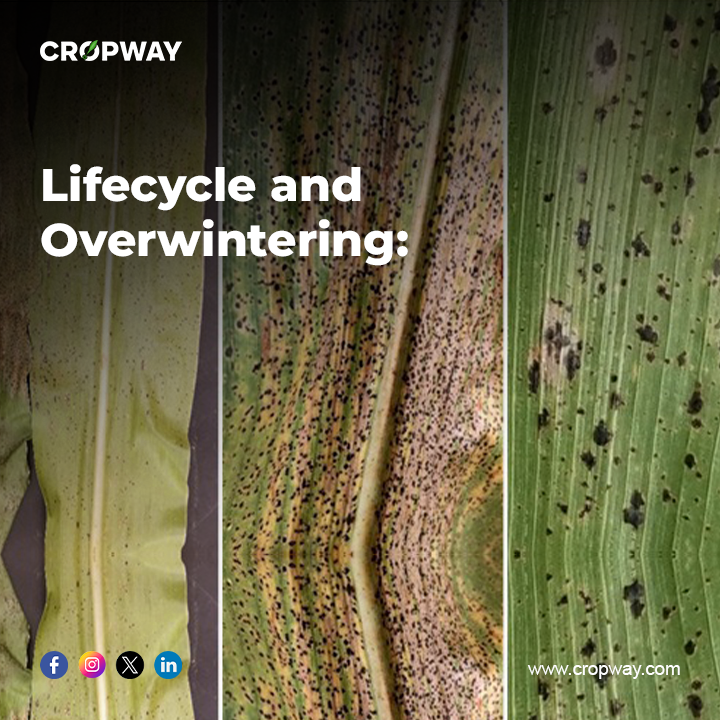
Tar spot, is a troublesome fungal disease caused by Phyllachora maydis affecting corn, has a distinct lifecycle intricately tied to environmental conditions. The pathogen responsible for this affliction takes refuge within corn residue left on the soil’s surface during the winter months. These remnants serve as a hibernating ground, harboring the fungal spores until conditions are ripe for their activation.
When the environment becomes conducive, characterized by elevated humidity levels and sustained leaf wetness, the dormant spores are beckoned to spring into action. This pivotal phase primes the stage for disease development. High humidity creates a moist microclimate, ideal for spore germination and subsequent penetration of the corn leaves. Prolonged leaf wetness further amplifies the vulnerability of the plant, providing an extended window for the pathogen to establish itself and propagate.
Understanding these environmental factors becomes paramount in managing tar spot effectively. Monitoring humidity levels, especially during critical growth stages of corn, and implementing practices that minimize leaf wetness, such as improving airflow and reducing excess moisture, can significantly mitigate the risk of disease outbreak. Additionally, strategic residue management and crop rotation techniques can be employed to disrupt the pathogen’s overwintering sites, diminishing its ability to resurface and infect future crops.
Understanding the complex interaction between the pathogen’s life cycle and environmental factors enables farmers and agriculture specialists to apply specific tactics to minimize the effects of tar spot, protecting corn yields and creating a more robust cultivation approach.
Managing tar spot effectively requires a comprehensive strategy that addresses various aspects of cultivation and disease prevention.
- Crop Rotation: Crop rotation breaks the cycle of tar spot by swapping corn with non-host crops. After a season, crop residue becomes a refuge for the tar spot fungus. But introducing non-host crops disrupts this comfort zone. Without its preferred habitat, the fungus struggles to survive, let alone multiply. This interruption in its life cycle is key for disease management, starving the fungus, and creating a healthier environment for future crops.
- Hybrid Selection: Selecting corn hybrids resistant or tolerant to tar spot acts as a powerful defense against the disease. Breeders continually develop new hybrids with enhanced traits, offering proactive protection against infection. Choosing these hybrids is like deploying an army equipped to fend off tar spot, minimizing yield losses and reducing reliance on other control measures. It’s an investment in securing healthier and more resilient crops.
- Fungicide Application: Timely and targeted fungicide applications can be an essential component of disease management. Fungicides specifically designed to combat tar spot can be applied preventatively or at the first signs of a disease outbreak, particularly during periods of high humidity and favorable conditions for disease development. Proper application timing and adherence to recommended dosage rates are crucial for effective control. Fungicide like benomyl and carbendazim, captan, fenpropimorph, mancozeb, and propiconazole are found to be effective in reducing tar spot and protecting yield.
- Field Hygiene: Maintaining field hygiene is pivotal in reducing the overwintering potential of the tar spot pathogen. Removing and properly disposing of crop debris after harvest can limit the pathogen’s survival on residue, decreasing the source of inoculum for subsequent seasons. This practice helps disrupt the disease cycle and lowers the risk of infection for future crops.
- Cultural Practices: Implementing cultural practices that promote better airflow and reduce moisture on leaves can aid in disease prevention. Proper spacing between plants, adequate drainage, and avoiding overhead irrigation can minimize leaf wetness, creating an environment less conducive to tar spot development.
- Monitoring and Integrated Pest Management (IPM): Regular scouting and monitoring of fields for early signs of tar spot are crucial. Implementing an integrated approach that combines various control methods based on field observations helps in making informed management decisions. This might involve adjusting planting dates, employing resistant hybrids, or modifying fungicide application schedules based on disease pressure and weather conditions.
By amalgamating these strategies—crop rotation, hybrid selection, field hygiene, and perhaps selective fungicide use—farmers craft a holistic approach that synergizes multiple layers of defense against tar spot. This integrated strategy not only reduces the immediate impact of the disease but also contributes to long-term sustainability by fostering healthier soil and resilient crops.
Ultimately, success in tar spot management stems from understanding the nuances of your farm’s ecosystem and aligning diverse measures to create a harmonious defense system against this pesky fungal menace.
Conclusion
Effectively managing the elusive tar spot pathogen demands a multifaceted strategy. To fortify our defenses against this fungal threat, we must deepen our understanding of its biology and epidemiology. This knowledge forms the backbone for targeted interventions and the development of rapid diagnostics. Employing predictive disease weather models and establishing robust surveillance systems allows for early detection and timely responses. These measures enable farmers to preemptively implement strategies to mitigate disease spread.
Furthermore, investing in breeding programs to develop resistant germplasm provides a long-term solution, equipping future crops with natural defenses against tar spots.By integrating these approaches, we forge a comprehensive defense against tar spot, reducing its impact and fostering more resilient and sustainable corn cultivation in at-risk regions.

